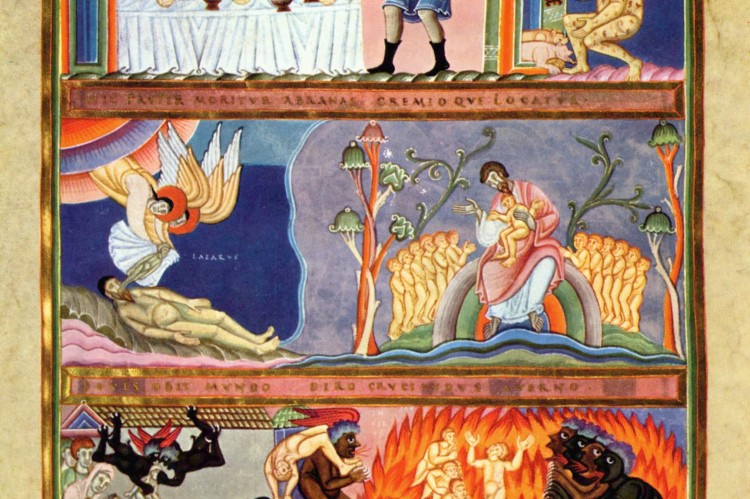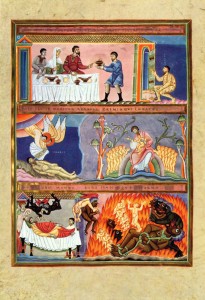The original post is found here.
Honors Seminar update
 |
I am delighted to have such outstanding students qualify for and enroll in my Honors Seminar, “Chorus of Voices: The ‘Afterlives’ of Parables.” The first two weeks of classes (we meet on T/Th) have been fantastic.
Our class has been given the privilege of meeting in the Special Collections Room of the Oxford College library (it’s not really a classroom). It’s a perfect location for our seminar, and the resources we need are either at our fingertips with online materials or just a short walk away in the stacks.
The seminar is really a “working group,” because it is a collaboration. The students are each working on a semester-long project, and I am working on a similar project (this book).
So far, students have picked the parable on which they want to work the entire semester. They will explore the reception history of “their” parable in different eras, perspectives, media, and so forth.
Students have picked the following parables on which to focus:
- The Final Judgment—Sheep/Goats (Matt 25:31-46)
- The Rich Man and Lazarus (Luke 16:19-31)
- The Talents (Matt 25:14-30)
- Workers in the Vineyard (Matt 20:1-16)
Each week every one of us will report (e.g., give a paper) on our progress. The students have already found some very interesting things–many of which I had not seen/heard before–so we are already learning a lot from each other
We started the class by establishing what “doing” reception history means, and we are accomplishing that primarily in a “Ways of Inquiry” (distinctive to Oxford College of Emory University) approach.
We started with Thomas Hart Benton’s Prodigal Son lithograph, talking about our initial observations/thoughts and then discussing what they needed to do/know in order to do a “reception history” of this image.
I won’t discuss those matters in detail, but in the other class periods, we examined other receptions of the parable of the Prodigal Son: (a) Chartres Cathedral (stained-glass window), (b) Antonia Pulci (play), (c) Albrecht Dürer (engraving), and (d) Robert Wilkins (blues song; we also talked about blues music in general and some other blues songs about parables).
Students have now read and critiqued the sections of my book on “The Parables and the Blues,” Albrecht Dürer, and Antonia Pulci. I am amazed at how quickly they have picked up essential elements of reception history (they work on the image, play, text, etc. itself before they read about it). They also have been extremely insightful about my book drafts, and they have already made significant contributions toward making the book better.
Starting the week after next, once students get going on their projects more fully, we will devote equal time in class to all projects–mine will merely be one of the five projects.
We are primarily focusing on the receptions themselves: we worked careful and extensively, for example, on both reading the lyrics of the blues songs we discussed, but we also spent a significant amount of class time listening to various versions of those blues songs–from the “original” version to more recent “redone” versions (Blind Joe Taggart, among others, deserves more “hits” on YouTube).



